In the evolving banking landscape, robust AML transaction monitoring systems are crucial for combating financial crimes. This guide highlights the need for these systems, discusses key challenges like high false positives, and explores advanced techniques such as anomaly monitoring and AI integration. Learn how to build effective transaction monitoring frameworks to enhance compliance and mitigate risks.
The banking industry continues to build robust AML compliance systems and practices amid growing financial crime threats and volatility. In this regard, reliable and evolved transaction monitoring systems are key to enabling adequate protection for banks and other institutions against sophisticated hacking attempts, state-sponsored attacks, acts of financial terrorism, and other threats. Nonetheless, these malicious actors find a way to attack or bypass banks’ security setups for anti-money laundering and fraud prevention.
While banks face significant financial crime threats, transaction monitoring is at the core of their AML compliance obligations. Imagine building a robust system that uses automation and human expertise to flag nearly every malicious transaction while minimizing false positives.
This guide explores the need for a robust AML transaction monitoring system, key challenges, and techniques for transaction monitoring. It also outlines the role of emerging technologies and the core components for building a robust transaction monitoring system for enhanced financial crime compliance.
Need for a Robust Transaction Monitoring System
Financial institutions, including banks, make efforts to maintain a positive consumer sentiment, and instilling confidence in compliant and secure services is pivotal to this need. In case of a deviation or lapse, financial institutions may face challenges like mass withdrawals, loss of customer and stakeholder trust, and other financial uncertainties due to sanctions and fines. The following needs compel banks to implement a robust transaction monitoring system.
a. Money Laundering and Terror Financing
Involvement in money laundering or terror financing, deliberate or unintentional, attracts sanctions and fines with negative consequences. FATF, OFAC, and other regulatory bodies issue red flags and guidelines to monitor and detect suspicious transactions, including transaction laundering and cross-border transactions, and curtail exploitation of the global financial system for money laundering and terror financing.
Recommended for You: How Money Laundering Schemes Changed in the Digital Age
b. Fraud Prevention
Another major challenge for banks is to ensure their customers are neither victims of financial fraud nor culprits. The banking industry thrives on trust, and if customers of a bank are either involved in or are victims of financial frauds like identity theft, false insurance claims, dump schemes, etc., the bank’s credibility takes a massive hit, bringing down the customers’ morale.
Recommended for You: How to Enhance Fraud Detection in Digital Payments – A Guide for Banks
c. Bribery and Corruption
Law enforcement and legal authorities track and prosecute cases of bribery and corruption using the money trail. Banks need to detect these suspicious cases in advance and be proactive. Violations can lead to significant reputational losses due to negative media and prosecution, including allegations of complicity, lapses in due diligence, etc. Banks must curtail bribery and illicit transactions to protect their reputation and customers.
3 Key Challenges with Transaction Monitoring Systems
Transaction monitoring systems (TMS) are essential for financial institutions to detect and report suspicious transactions that indicate money laundering and other financial crimes. However, implementing and maintaining these systems pose several challenges:
1. High False Positives
Every flagged transaction results in a ticket and requires intervention from Level 1 analysts who evaluate and validate whether the case is genuinely an illicit transaction. With up to 95% of false positives among the total flagged cases, banks and financial institutions bear a high cost in monitoring the AML/CFT transactions.
2. One Size Fits All Approach
The behavior and transaction patterns of customers differ from one entity to another. The need is to implement clustering algorithms to monitor the transactions based on customer segments while offering them personalized financial products and experiences. The significant size and diversity of the customer base pose a challenge to this requirement.
3. Scenario Overcrowding
Number of scenarios in any transaction monitoring system grows over time. A new list of scenarios is added to transaction monitoring systems with new banking reforms and compliance or regulatory framework updates. Overcrowded scenarios increase complexities, monitoring time, and costs.
5 Key Transaction Monitoring Techniques
Transaction monitoring system’s success depends on its ability to minimize false positives while detecting malicious transactions. While triggering alerts for every suspicious transaction is straightforward, detecting false positives is the real challenge.
High volumes of transactions in banking systems make it necessary to build a system that reduces false positives. False alerts increase transaction monitoring costs due to human intervention needed on every ticket raised.
1. Anomaly Monitoring
Anomaly monitoring techniques track transactions by constantly comparing transaction patterns with the norm and issuing an alert when they detect a deviation. Traditional anomaly detection models utilized statistical models. However, modern anomaly detection systems, embedded with AI and machine learning capabilities, can monitor transactions more effectively on parameters such as transaction size, geography, frequency, etc.
2. Network Monitoring
Network Monitoring is a complex technique that examines transactional relationships between different entities within the financial system. It unravels connections and hidden relationships between various entities to identify potential cases of money laundering, fraud schemes, illicit fund flows, shared accounts, interlinked transactions, etc.
3. Rule-Based Monitoring
Rule-based monitoring is the oldest transaction monitoring technique and works on pre-defined rules and thresholds to trigger alerts on suspicious transactions and activities. These rules are often a part of the global transaction monitoring regulations, and banks get clear guidelines from various banking bodies to set these up. These rules use transaction patterns and other known typologies of financial crimes to monitor transactions.
4. Behavior-Based Monitoring
Behavior-based monitoring is a complex yet effective transaction monitoring technique that learns standard behavioral patterns and sets a baseline. Subsequently, it monitors deviations from the standard behavior and issues an alert when it detects an illicit transaction.
5. Adverse Media Screening
This transaction monitoring technique screens digital and print media for adverse reports on entities, including individuals, PEPs, organizations, and others. This system leverages AI to keep track of media reports and compare the sanctioned/blocked entities with its clientele to issue alerts.
Role of AI, ML, and Blockchain in Transaction Monitoring
The role of machine learning and artificial intelligence in transaction monitoring has increased manifolds. AI and ML systems enable automation at scale, improving efficiency and reducing human efforts and transaction monitoring costs.
Some examples of AI and ML in transaction monitoring process are:
- Automated rule generation and modification for rule-based monitoring systems leveraging machine learning
- Artificial intelligence-powered systems detect anomalies effectively while reducing false positives, thus reducing costs.
- Automated behavior modeling systems leverage AI and ML to detect deviations from standard behavior while reducing false positives.
- Complex pattern recognition and network identification using AI-based transaction monitoring systems
To track down and monitor crypto transactions, such as Bitcoin, banks and financial institutions can leverage Blockchain technology. With BASEL Accords recognizing crypto transactions, banks are now working to implement a robust blockchain framework that can help them keep track of business or personal transactions of their customers.
For example, HSBC has integrated blockchain into its global trade finance operations, which has helped it significantly reduce the risk of fraud and errors in international transactions.
Building Blocks of a Robust Transaction Monitoring System
After understanding the need for a transaction monitoring system, the next step is to review the building blocks of a robust transaction monitoring system.
1. Data Sources
Incorporating vast data sources, including real-time data, is one of the fundamental building blocks of formulating a robust transaction monitoring system. The effectiveness of transaction monitoring systems depends on the breadth and depth of data financial institutions can access and analyze.
2. Data Integration
Once the data sources are available, the next step is to build a platform that integrates data from various internal and external sources into a single easy-to-access platform, expanding the umbrella of investigation. This integrated data includes transaction records, customer information, account details, and third-party databases, such as sanction lists and PEP lists.
3. Quality Control
Before working on the data, checking data quality is crucial, including cleaning the consolidated data to remove errors, duplicates, and inconsistencies. A robust quality control system and methodology should routinely evaluate the quality of data fed into the system. This process should have both automated and human evaluations on random samples.
4. Risk Assessment
Banks have varying products and services and operate in different geographies, resulting in diverse risks. Financial institutions should assess all risks and vulnerabilities that can exploit their products and services resulting in financial crimes such as money laundering.
5. Policy Implementation
There should be one global policy applicable across the organization irrespective of the geography of operation, products, etc. A single policy environment helps reduce ambiguity and gives a clear mandate to the teams working on various transaction monitoring processes.
6. Procedures Setup
While the policies are set up at the organizational level, the procedures are tailored to meet the needs of every product, service, customer segment, geography, etc. Using the same policy, multiple response procedures can be set up depending on the impact of a breach. These procedures should outline the roles and responsibilities of personnel and define threshold values for reporting suspicious activity on various products and services, etc. It should also offer a robust reporting, escalation, and reporting mechanism in case of breach.
7. Leverage Technology
While setting up a monitoring and reporting system, one should always consider the best ways to leverage technologies like machine learning, artificial intelligence, blockchain, etc. These technologies offer advanced analytics and can identify complex patterns and anomalies. Leveraging technology can improve the detection of suspicious activities while bringing down false positives to reduce manual effort.
8. Scenarios Setup
Scenarios are a key component of a robust transaction monitoring system. It involves the creation of models, setting up rules, and creating scenarios for various segments of products, services, customers, and geographies. Using these, the system defines the criteria for flagging suspicious transactions while considering various risk factors, regulatory requirements, banking guidelines, and other known typologies.
9. Alert Generation
Alert generation is done by the system and is triggered based on the predefined scenarios and thresholds assigned to various topologies. The success of an alert generation system relies not on generating more alerts but on minimizing the false positives while not missing any malicious transaction. False positives increase the number of cases that need human intervention, thus increasing the operational costs.
10. Alerts Investigation
Every alert generated by the system is investigated by a team of AML analysts who assess the transaction, account, and customer to do a deep investigation into the transaction and determine the future course of action on the triggered alert.
12. Alert Management
Once an alert is generated it is entered into a ticketing or case management system where every nuance of the case is documented and the progress of investigation is tracked. A robust case management system not only offers an audit trail but also facilitates collaboration across teams and lays the foundation for consistent decision-making.
13. Regular Audits
The implemented system is regularly audited and validated to ensure its effectiveness and adherence to the regulatory frameworks applicable across various geographies. There is a need for independent audits and checks to ensure there are no overlooked gaps or weaknesses in the system.
14. Continuous Upgrades
The system should be regularly updated to meet the ever-evolving compliance landscape and adaptable to implement any upgrades on technology, regulatory frameworks, and algorithms. A vigilant team should be in place that should watch out for challenges faced by similar organizations across the globe and proactively make the fixes or upgrades as needed.
15. Organizational Learning & Readiness
Analysts and teams working on regulatory roles must keep themselves updated on the latest challenges, evasive maneuvers, regulatory requirements, compliance requirements, framework changes, and many other aspects of AML compliance. To keep up with these requirements, any organization working with AML compliance should ensure that they have a regular training calendar, and every individual should participate in these programs.
Setting up these components of a robust transaction monitoring system is essential. Every component has its purpose, and the reliability of the whole system relies on them. Imagine a robust system where the teams working on them are not abreast of the latest developments. They might miss a crucial step or make a judgment call without considering the latest developments.
5 Key Considerations for a Robust Transaction Monitoring System
When designing a system for Transaction monitoring, one should always ask the following questions to ascertain the reliability of the systems in place.
1. Is the banking system running the latest and most reliable technology stack?
The banking industry is prone to attacks and needs robust infrastructure to counter such attacks. The latest and most stable technology stack can provide reliable protection against malicious entities attempting to breach the system.
2. Are measures taken to comply with local regulations across all jurisdictions?
Local regulations should always be considered while designing the system. The system should be designed such that it complies with the regulatory requirements of all locations/territories of operation.
3. Is there a documented provision for periodic system updates?
The system should have a framework for periodic updates to keep abreast of improvements and fixes on the identified shortcomings of the system. While banking systems are robust and thoroughly tested for vulnerabilities, continuous improvements help them stay ahead of the threats.
4. Are there periodic independent audits of the system?
Independent audits can ensure the assessment of all challenges, compliances, and vulnerabilities by observers who are not working on the system. These observers bring a fresh perspective and a lot of experience to deep dive into the effectiveness and efficiency of the system.
5. Is there a program for staff training and evaluation?
A staff training program is essential to ensure the teams working in transaction monitoring roles are well-versed with the latest updates in technology, regulatory frameworks, compliance standards, and operating procedures. At the same time, on the commencement of such programs, there should be a system to assess the participants on the effectiveness of such programs.
These questions help us understand the effectiveness of the system on various aspects of transaction monitoring. An effective system is not only robust in technology and compliance but also offers a comprehensive outlook on personnel training and development.
AML Transaction Monitoring Systems FAQs
Besides banks, other financial institutions that require a robust transaction monitoring system for AML compliance include credit unions, money service businesses (MSBs), payment processors, cryptocurrency exchanges, insurance companies, and investment firms. These entities face similar threats of money laundering and financial crime and are under regulatory obligations to monitor transactions and report suspicious activities.
Smaller financial institutions can leverage cloud-based AML solutions that offer scalability and cost-effectiveness. They can also consider partnering with fintech companies specializing in AML compliance to access advanced technologies like AI and ML for monitoring without the need for significant upfront investment in IT infrastructure and personnel training. Additionally, regulatory technology (RegTech) solutions can provide customizable platforms that fit smaller institutions’ specific needs and risk profiles.
Yes, advanced transaction monitoring systems can differentiate between various types of transactions, such as domestic and international transfers, and apply different monitoring criteria based on the risk levels associated with these transactions. These systems can be configured with rules and scenarios that specifically address the unique risks of cross-border transactions, including different jurisdictions’ regulations, currency exchange rates, and the involvement of high-risk countries.
Transaction monitoring systems are designed to comply with privacy and data protection regulations, such as GDPR in the European Union or CCPA in California, by incorporating data encryption, access controls, and anonymization techniques. These systems ensure that personal data is processed legally, transparently, and securely, maintaining customer confidentiality while still allowing for effective monitoring and reporting of suspicious activities.
Human analysts remain essential in transaction monitoring, even with AI advancements. They review system-generated alerts, apply judgment to complex cases, and ensure AML compliance by addressing false positives and missed alerts and improving detection. However, continuous training and upskilling preferably via a digital Learning solution are essential to maintain their effectiveness.
Conclusion
Transaction monitoring is an essential component of the regulatory framework for the banking industry. It enables the banks to keep track of all the transactions while ensuring seamless transactions for most of the transactions and financial crime compliance.
Banks and financial institutions can consider deploying an enterpriser-grade AI/ML-powered solution, such as ALFA, to reduce false positives and the costs involved with manual human intervention.
To learn more about ALFA, connect with us at info@anaptyss.com


















